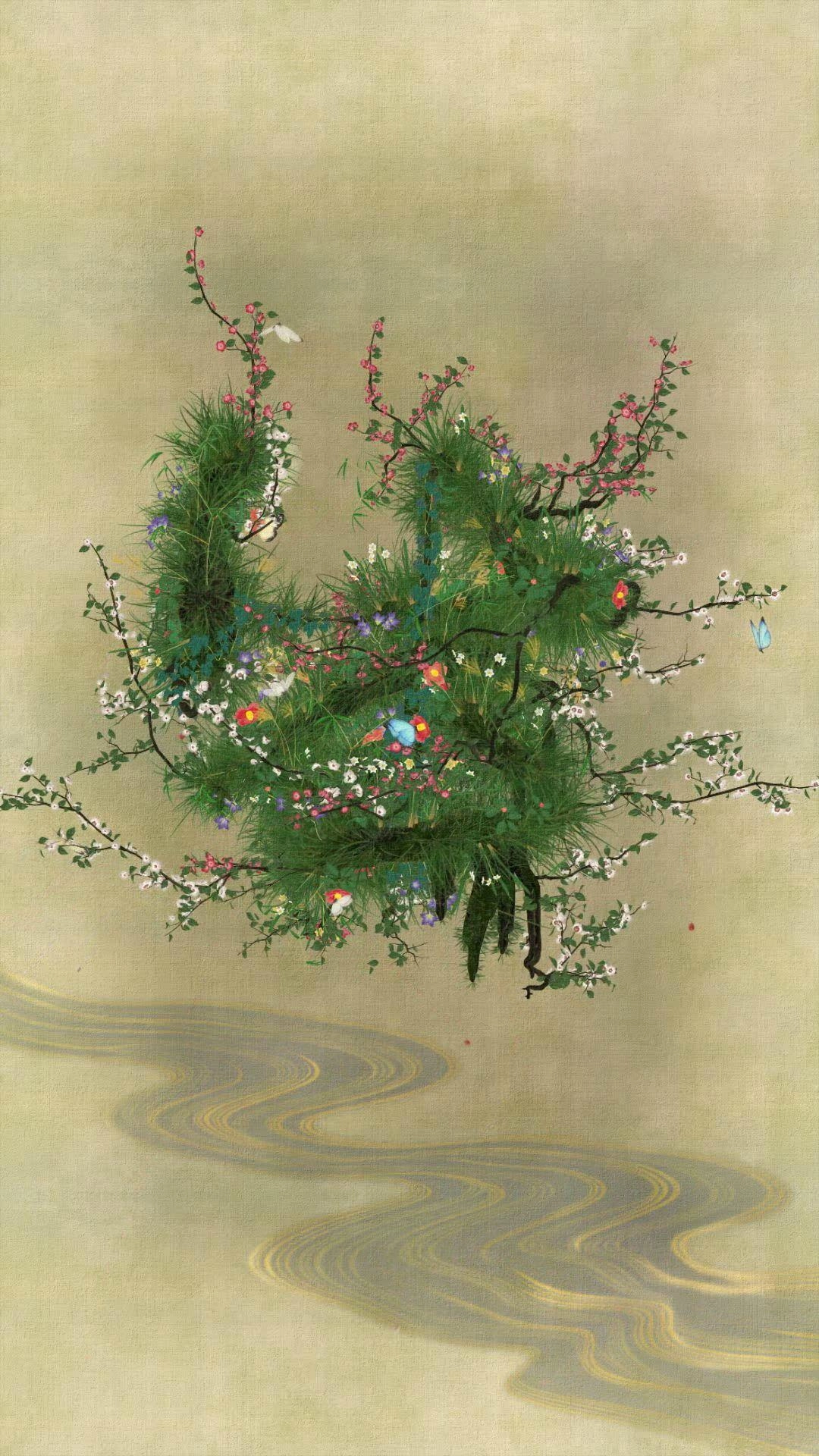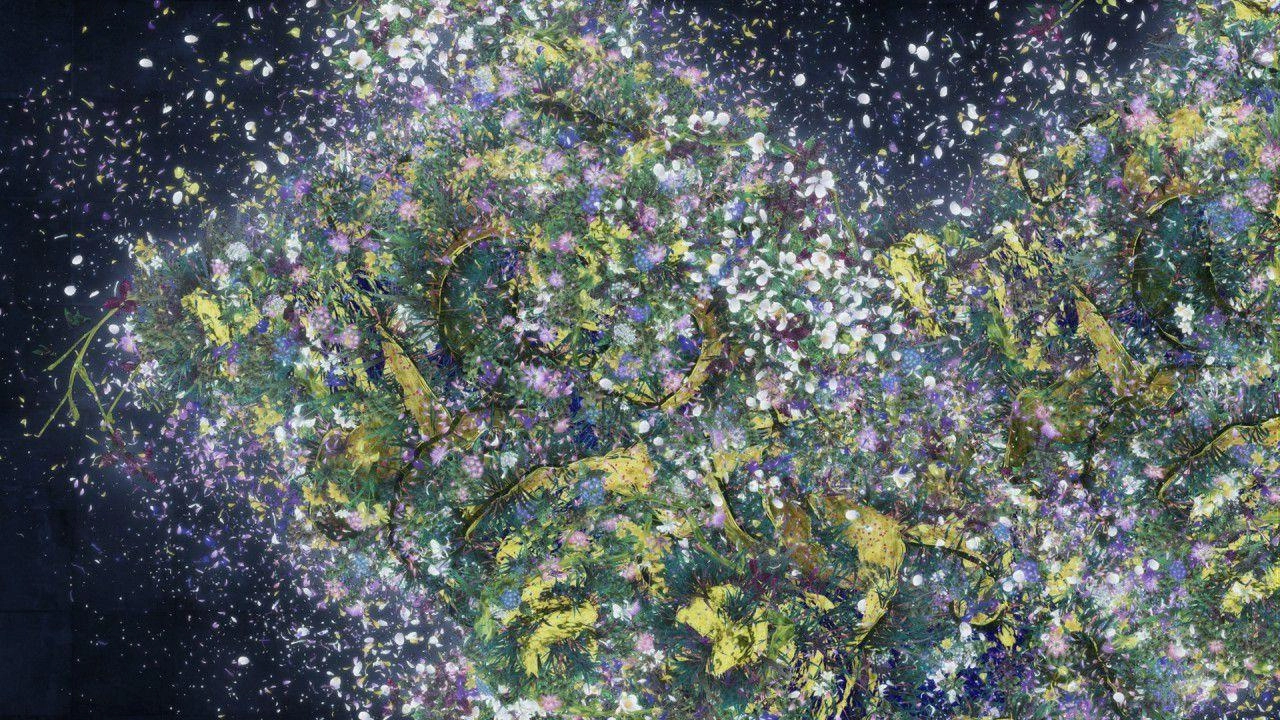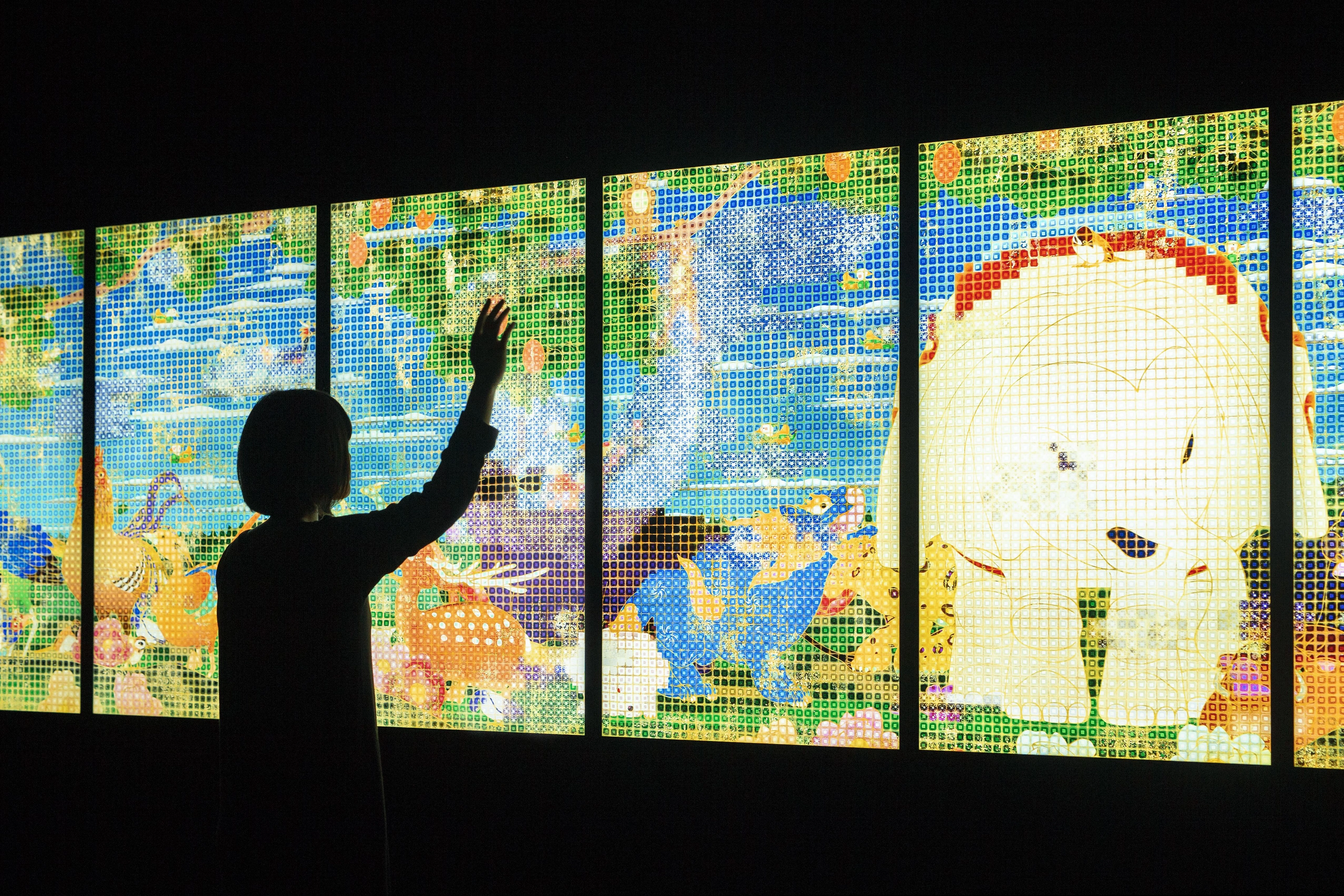TOSHIYUKI INOKO
– What is the concept and highlights of the current exhibition at Japan Society in New York?Inoko:This time, we have exhibited three pieces, two of which are interactive works.“United, Fragmented, Repeated and Impermanent World” was created based on an artwork by Ito Jakuchu, an Edo-period painter. It is an interactive digital art piece since it gradually changes in response to viewers’ gestures.There is also a space that showcases “Flowers and People – Gold and Dark” that has the function to make flowers fall when you touch them and to keep the flowers blooming when you remain a certain distance from them. Flowers bloom and die naturally without any interruption by humans. But in this art piece, the lives of flowers become shorter when you touch them and more flowers bloom if you stay away from them.These kinds of interactive artworks are affected by viewers’ behaviors and they become complete art pieces by including viewers rather than having them as observers.– Please tell us about team members of the project as well as the process from the design to the completion of your artwork.Inoko:“Life survives by the power of life” is created by a 3D CG animation team. First of all, we created a three-dimensional space on a computer and drew flowers and calligraphic brush strokes for the art piece in that space. Then, we transformed the drawings into animations using our theory of a logical structure of space called “Ultra Subjective Space.”For “United, Fragmented, Repeated and Impermanent World,” we drew motifs inspired from Ito Jakuchu’s painting and then our CG team made three-dimensional objects of the drawings, which were then animated in a three dimensional space. The video was edited by computer to make tiles that make the mural change into abstract pixels when viewers face the tiles. The team for the project was made up of artists, a group of people for 3D animation, and engineers for the sensors.I don’t envision the completed final versions of our artworks from the beginning. They are created through trial and error and we continually make improvements to our art pieces.– What made you establish teamLab?Inoko:The main purpose of launching teamLab is to fulfill my personal interest. Not by myself, but with people with various specialties enabling us to experiment with a lot of new things. I wanted to offer a place where we can create and learn something new through experimentation. That’s why my company’s name includes the word “Lab.”Right before going to college, the Internet came out and I recognized the coming of a new digital society, which led me to have an interest in creating something new in that new society. I was especially interested in changing people’s sense of value by innovation through technology and the arts.However, the technological innovation had already been made by talented people in Silicon Valley – at such a spectacular level that I couldn’t compete with it. Therefore, I decided to focus on expanding the definition of art using digital technology and changing people’s minds by art, both of which hadn’t been done in Silicon Valley.– Which aspects of the arts did you focus on?Inoko:Since I was little I have been immersed in computer games and comic books. For me they captured a space in a different way from that of Western perception, such as the space captured by a camera. One day, when I looked at a traditional Japanese art painting, I felt the way that the computer games and comic books are depicted on a flat screen is similar to that of traditional Japanese paintings. Then I started to look at many old Japanese paintings, and felt that old Japanese artists may have had a different spatial logic than that of Western perspective that fixes your view when you flatten a three-dimensional space. In the ideas of physics, which was my major at college, lenses and Western arts are considered to be a logical way to convert a three-dimensional space into a two-dimensional space. However, I thought flat pictures of traditional Japanese arts are a result of a unique Japanese logic to convert a three-dimensional space into a two-dimensional flat screen.It was at the time when I was about to go to college that the internet rolled out, and I was so interested in the areas of computers, digital, Internet and computer networks that I started to think I wanted to work in that field. Computers enabled me to interpret a three-dimensional world to a two-dimensional space in a variety of ways, so by using the computers I was trying to find out the Japanese spatial logic that is common to the old Japanese arts. Then by using that logic, I started to create Japanese art pieces myself.– What did you want to represent in your artworks? Inoko:A reason that I started to create the artworks is because I wanted to find out the old Japanese spatial logic that is different from the Western perspective. When you look back at history, after big revolutions new ideas were introduced and completely new societies were established. In that process, things that had been important before the revolutions turned out not to be and vice versa. Therefore, I thought the old Japanese spatial concept was something that was disregarded in the modern society because there were no benefits to us. However, I believe there are some tips for the new society in that idea and I’m interested in finding it out and making things that go on into the future.When you look for the traditional Japanese spatial logic, a common approach would be to read through old documents as historians do, but in my case I created simulations using a computer since my background is in physics. In the beginning, I had no idea about how the benefits from the traditional Japanese perspective go along with this new society and I started to find it out through a process of making my own artworks. So I kept making art pieces without thinking of places to showcase them.– What are characteristics of teamLab’s artworks?








